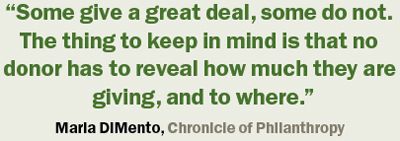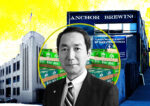Trending
Rich, but also generous?
Real estate moguls donate plenty, but maybe not at the level of some peers

The nine New York City real estate titans that earned ink on this year’s Forbes 400 list have a combined worth of nearly $21 billion, a sum surpassing the GDP of dozens of sovereign countries. Together, they control hundreds of millions of square feet of real estate the world over — and their collective portfolio includes several newspapers, magazines, at least one cable channel, an NFL franchise and a small fleet of private jets.
To be sure, all nine members of the Forbes list have shown extreme generosity over the years, and their names dot the city’s landscape, from the LeFrak Center at New York-Presbyterian Hospital to the Leonard Stern Business School and the Sheldon Solow Library at New York University.
But it was Boston Properties’ Mort Zuckerman alone who made BusinessWeek’s list of the top 50 philanthropists in 2008, coming in at number 46 after donating $215 million to health care, cancer research, education and cultural causes. (BusinessWeek did not produce a “Top Philanthropists” list in 2009 or so far in 2010.)
In general, philanthropy, like much of the economy, is hurting. According to the Chronicle of Philanthropy, a trade publication that covers nonprofits and philanthropy, the contributions to the nation’s biggest charities dropped 11 percent last year, the worst decline in two decades. Canvassing the Chronicle’s online database, which tracks donations of more than a million dollars, the current Forbes listees in New York real estate have — at best — a possibly mixed record of giving.
Among the nine — Leon Charney, Richard LeFrak, Stephen Ross, Steven Roth, Sheldon Solow, Jerry Speyer, Leonard Stern, Donald Trump and Zuckerman — just three have made multimillion-dollar donations that are recorded in the database, which goes back to 2003.
At the end of 2008, Sheldon Solow donated $4 million to the New York University Institute of Fine Arts. A year earlier, Stephen Ross donated $5 million to the University of Michigan. That donation of Ross’ is the latest in a string of donations to his alma mater, which began with a huge 2004 pledge of $100 million.
That gift placed him No. 13 on the Chronicle’s 2004 list of the 50 biggest donors. The only other Forbes listee to make the Chronicle’s top 50 donors was Zuckerman, who in 2006 tied for No. 18, with a similarly large $100 million pledge to Memorial Sloan-Kettering Hospital.
Others, like Jerry Speyer, spread their money and time across the cultural landscape of New York. Speyer has a major presence on some of the most significant boards in the city, including as chairman of MoMA and as vice chairman at New York-Presbyterian Hospital. Stern donated tens of millions to New York University in the late 1980s and early 1990s, and the business school is named after him.
According to Maria DiMento, the assistant editor at the Chronicle of Philanthropy, the real estate titans of New York can be big donors, but unlike, say, Michael Bloomberg, a staple on the Chronicle’s annual list of top donors, some of them might be giving anonymously.
“Some [real estate billionaires] give a great deal, some do not. The thing to keep in mind is that no donor has to reveal how much they are giving, and to where. They may be giving away a great deal, but they may be doing it quietly,” she said.




